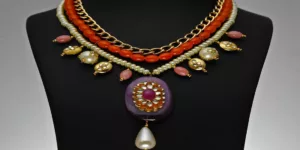Over the last five years, the Indian economy has got a bulk share of online shopping. The development of smartphone has made it easier for the consumers to get access to the world of e-commerce with ease. The retail industry has prepared themselves for catering to the group of inspirational clients who are always expecting something new to come in their way. As the time passes by, the industry has rapidly incorporated advanced technology to enhance the experience of the shoppers.
However, the entire process was not an easy journey. Although the number of pitfalls was few when it came to the fashion retail industry making their mark all over the internet, the challenges became too tight to dissolve at some points. The best part of the story, the industry never turned their way from the path of success. For this reason, the evolution cycle never stopped and proceeded towards betterment.
Before entering into the general synopsis of the development process, it is necessary to check the statistical data that suggests the process took place and there is no way anything can stop the growth. In the year 1999, the Indian consumers were introduced to two major fashion retailers including Rediff shopping and Indiatimes shopping. After six years of market domination, these two retailers have got their partner eBay.in.
Followed by that Flipkart, Jabong, Snapdeal, Myntra and Amazon have taken over the market within the next ten years. Some other websites also made their entry to be a part of the e-tail race and made a significant contribution to the gradual evolution. However, the process was not that continuous. Rather it was rapid enough to change the entire business scenario of the fashion industry from a traditional sector that did not have encountered such massive shifts in the market pattern.
Reasons behind rapid growth
The Indian market has always utilized the diversified nature of demographics. Online fashion industry refused to lag behind and therefore used the diversified choice of their potential as their USP. They have focused on creating and selling products that cater to different needs. As soon as the fashion industry started to crawl on the internet, the first attempt they made was to create a strong brand awareness.
While the leading fashion brands were limited within the shopping malls serving the clients of metropolitan cities, online fashion retailers have expanded their market to the Tier II as well as Tier III cities along with the metro cities. The retailers further utilized the privilege of changing their business model which was quite impossible for the offline stores. They have left no stones unturned to make sure that the shoppers have the best possible experience of shopping through their multi-channel retailing.
India’s FDI retail policy can also be considered as an intriguing part of the development as the policy enabled the leading international fashion brands to enter the Indian market and participate the economic growth of the country. The retailers have enjoyed the benefits of receiving high benefits against the moderate amount of investment that made them concentrate on their productivity even more. Lastly, the changing pattern of consumer’s buying behavior has also stimulated the growth and evolution of the industry over the internet.
Changing trends of fashion industry
- The number of brands in the Indian fashion industry has increased
- The demand and supply of customized fashion-based products have enhanced
- Fashion retailers have become more flexible than ever regarding the incorporation of advanced technologies
- Growing demand on both western and ethnic apparels among women
- Increasing demand for fashion accessories such jewelry, shoes and handbags.
- The number of online customers is surpassing that of the offline shops
- The competition among the retailers is growing as the global brands are getting entry to the Indian e-tail market
- Non-urban consumers are getting keen to try branded fashion products as each day is passing by
- Expenditure of fashion products have subsequently crossed the other three top product line including electronics products, books and media
- Statistics have declared about 30% of the entire retail market has captured by fashion apparels
- Major offline companies of India like Reliance, Tata & Aditya Birla Group have entered the e-tail market for expanding their customer base
- People have started accepting offbeat fashion products from retailers like Koovs, Red Polka , Fashionbuzzer and Korra that always encountered a limitation in previous times regarding getting direct access to the targeted consumers
- Multichannel strategy has become immensely successful in the case of generating revenue and still have a long way to go
Miles to go – the challenges
Fashion e-tail is comparatively new yet booming industry, and therefore it is not free from adverse impacts of the market. The primary challenges include:
- Whereas previously 25% of sales was promoted by a single vendor, the diversification of sellers have left a strong impact
- A certain level of difficulty in product assortment as the range is getting wide each day
- Marketing methods of online retailers using unique selling proposition is getting desperate
- Timely product delivery to various corners of India demand constructive manpower
- Consumer buying behavior is still restricted as a section of them expects to experience the product in their hands before they finally buy it.
Fashion based product Dominance Online
- Fashion Apparel (47%)
- Fashion Accessories (40%)
- Footwear (9%)
- Lingerie (4%)
Among the fashion accessories, 58% of the total customer base prefers jewelry compared to the other products. Similarly, in the year 2016, the apparel section (42%) was dominated by ethnic wear.
The Key Players in Online Fashion Retail
Although Flipkart, comprising of Myntra and Jabong is in the leading position Snapdeal and Amazon Fashion is not far behind. An estimation regarding the future market dominance suggests that Flipkart will have 65-70% share of the overall market within the year 2020. The increasing demands online retailers like Koovs, Voonik, Craftsvilla and YepMe can also be a concerning factor for business giant Flipkart.
The Future scope
- 30% of the total customers of Amazon India has preferred Amazon Fashion in the past years making it one of the leading brands for fashion based products. Therefore, the company will invest more on their fashion section for rapid market acquisition, leaving Amazon a bit behind.
- More private labels will be launched by the big online fashion retailers
- Chinese retailer giant Alibaba is expected to make a strong presence in the Indian market
- There is a lot of scope for the future consolidations of companies
To summarize
The fashion industry has done a great job by showing tremendous flexibility with the sole purpose of satisfying the customers. It is expected that the sector will continue to amaze the world with their innovative approach. New strategies are sure to be incorporated by the business giants so that the re-occurrence of obligations can be diminished. Just like, fashion breaks out its shell and presents itself being something entirely new, the industry running by fashion will do the same shortly.








